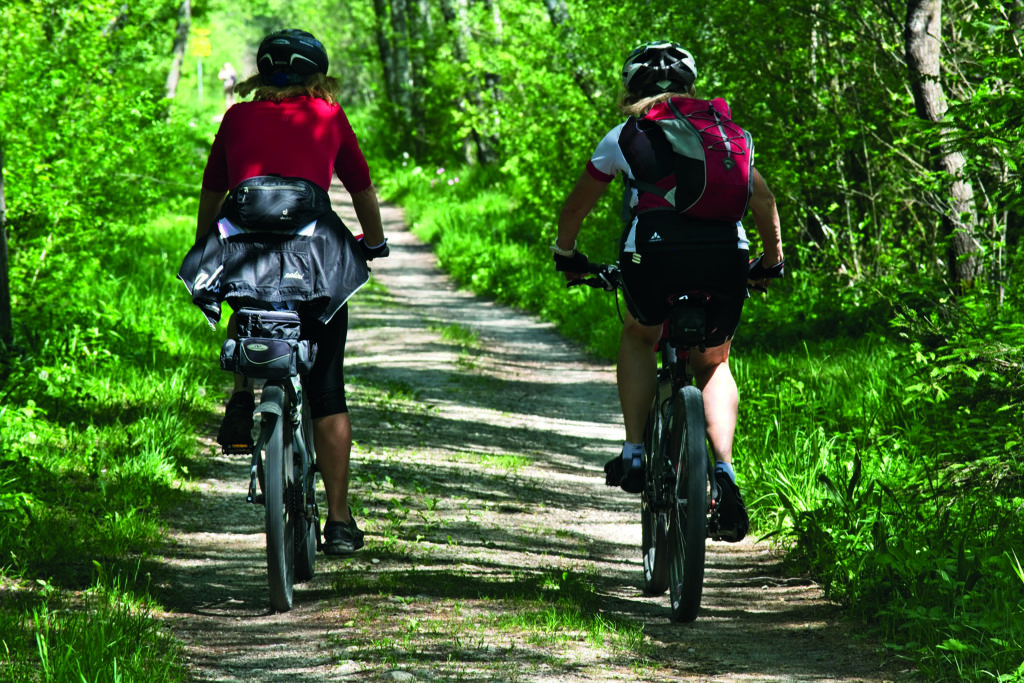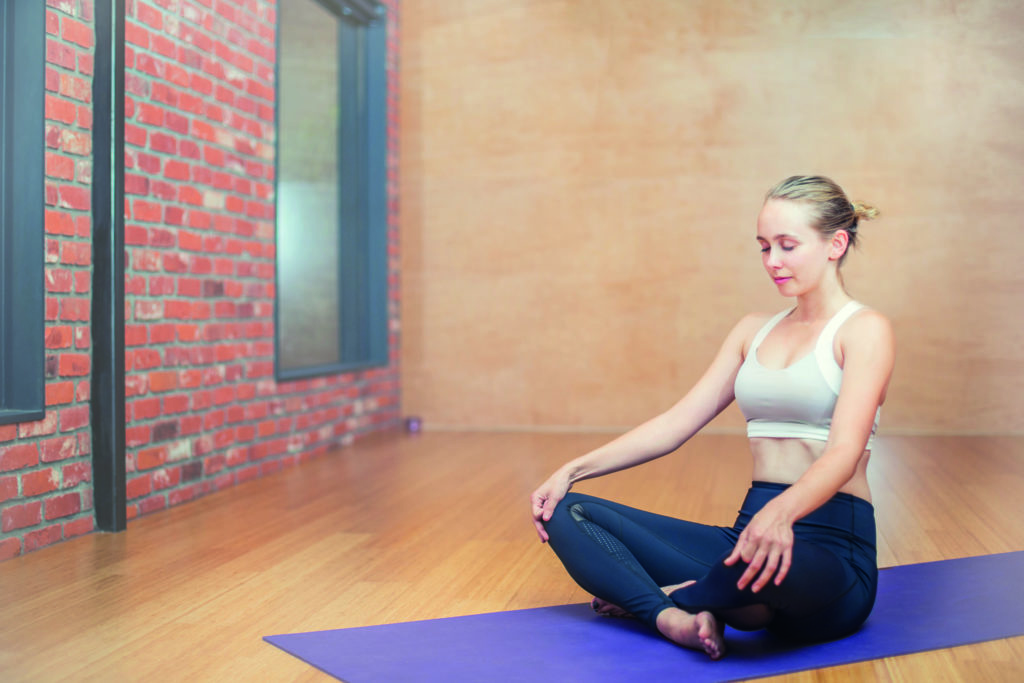Everyone wants to be ‘dive fit’ – the panel of dive-industry experts have plenty of tips on how best to achieve that
GUE’s John Kendall: “I often hear people talking about being ‘dive fit’ and how this precludes the need to simply be ‘fit’ – unfortunately, they’re wrong. General fitness is a vital component of being prepared for diving.
“We regularly put ourselves in situations in which our entire body is working harder to simply survive (for example, breathing at 30m takes four times the effort as breathing at the surface) and our physical and mental fitness will massively affect the ease and outcomes of the dive. Fitness is not something that can be done at the last minute, but requires a conscious continual effort to maintain and improve.
“The higher the exposure of the dive, the higher the fitness levels need to be. So for me, it's not just a matter of getting ‘dive fit’ ready for the season, it's more a matter of getting and maintaining a good fitness level all year round. If you’re not already in this camp, start today, and try to get more active.
“Walk up the stairs instead of using the lift; check to see if walking or cycling to work would be feasible. If not, short-duration, high-impact workouts can be a great way of rapidly gaining fitness and losing weight. My personal favourites are T25 and Insanity, but there are many out there.
“Finally, consider having a proper diving medical done. Professionals are required to do this annually in the UK anyway, but it’s a good idea to have a proper check-up and make sure there are no hidden problems. Every year there are several fatalities and other incidents due to medical issues, and increasing your fitness can only help to reduce your risk.”
Phil Alberts of the British Sub-Aqua Club: “A simple but effective piece of advice when it comes to dive health is to treat your fitness as an important part of your overall kit-maintenance routine, all year round!
“While diving is not necessarily seen as an aerobic form of exercise by some, your level of fitness is essential for both your safety and participation in the sport. Your level of aerobic fitness and strength will almost certainly impact on your enjoyment – we have all noted, at times, how much easier it is to dive and get on with the business of diving towards the end of the season than it is as we ease ourselves creakily out of the winter months at the start.
“The key to getting off the starting blocks is to look at your level of fitness at the start of each season, and plan to improve and regularly maintain it. It doesn’t mean you suddenly have to start training like an ‘Ironman’, but activities that boost your aerobic ability and build your strength should be part of your regular routine.
“During the winter months, when open-water time is curtailed, you could also make the most of pool nights to not only practise your skills but to build in exercise. Many clubs incorporate challenges and team sports, such as octopush, to keep members entertained.
“Dive fitness also needs to take the environment into account – cold water in particular can put the body under extra stress – as well as the topside exertions as you get ready to dive. Be health-aware and understand your own body, which is especially important as we get a little older. Health-checks – just as you conduct regular kit-checks – can be a lifesaver.
“And when it’s finally time to dip your fin back into open water, go at a pace that’s right for you and be sure that you and your body are physically up to the type of diving you want to do.”
Garry Dallas, Director of Training RAID UK & Malta: “You don’t need to be a Hercules or Wonder Woman, just ‘dive-fit’. It’s a good time to lose a few calories after the Christmas period and in doing so, prepare yourself for the year ahead.
“No, don’t go bench-pressing as many cylinders as you can over your head, just involve yourself in some basic fitness, maybe at your local gym, or go jogging, swimming or cycling. Even simple exercises using your own bodyweight at home will be very rewarding. Good stamina and a bit of strength is what’s needed.
“As fit as we think we are, just turning awkwardly reaching for something at home, we canpull, stretch or even tear that unused or dormant muscle group. When you’re diving, wearing more than just a wetsuit, the same can happen without anticipating it, but now wearing bulky equipment could increase that factor.
“Keeping warm during diving, especially in cold climates, keeps your muscles warmer, more flexible and less prone to problems.
“Even if you were an avid diver but took a break, take it easy on your first few dives getting back into it. Never overdo it. Coldwater diving and the life under water is very enjoyable, but over-breathing or skip-breathing can turn that into a less-enjoyable dive, resulting in headaches. Relax your breathing and pick some easy dive-sites – and buddies!
“If you need some time in the pool first, go to your club and sort it with them – maybe even do a refresher to get your confidence up too.
“Other than that, be careful and aware of your surroundings above and below water.”
PADI EMEA Training Supervisor Vikki Batten in a previous life trained at a ballet school, became a contemporary dancer and worked as a pilates instructor at a London gym, so she knows a thing or two about fitness: “You don’t have to be an Olympian to dive, but better fitness makes diving easier and reduces the risk of health-related incidents.
“If you don’t fancy the gym, walking is a great way to exercise and enjoy the outdoors at the same time. If you fancy a bit more activity, get on your bike and head for the hills.
“I also recommend toning and stretching. There are so many ways to do this now, with dance classes for adults, yoga, pilates and many more. Strengthen your core and stretch your muscles and you’ll make it easier to carry and get in and out of dive-kit without injuring yourself. And if you think that’s a bit girly, check out your favourite footballer or rugby player – flexibility is absolutely key to their skill-set.”
Rich Somerset, PADI EMEA Territory Director, is a keen runner (he ran his first marathon seven years ago): “Not everyone can get to a gym to beef up on muscle – but that’s not really important for most of us as divers. A good cardio-vascular system is crucial, however – and there’s nothing like regular, light running to help achieve this. To unleash your inner runner, just follow a few simple steps:
- Set achievable goals – just 20 minutes running round the block two or three times a week is enough. Look at using the many ‘couch to 5k’ apps to give you encouragement
- Once this becomes comfortable, use your local Park Run to further motivate you
- Seek inspiration from Facebook groups (check out The Running Bug as an example)
- Get a killer soundtrack to make you feel epic! (Amazon has playlists dedicated to running)
“The hardest part of every run is the first step out of the door – no one ever regrets a run once it’s finished!”
Dave Protheroe, Marketing Consultant for PADI EMEA and an enthusiastic amateur squash player: “For those who find it tough to put sole to tarmac and pound the pavements for five miles, including a sport to complement a general fitness push is crucial.
“Any sport that requires a certain level of physical exertion will help, but find one that builds muscle, strengthens core, improves agility and flexibility and you’re onto a winner. The sport I regularly turn to during the winter nights is squash.
“A fast-paced game over 45 minutes will have me sweating more than a run ever could. The beauty of squash is that you don’t necessarily have to be amazing at it to have a fun workout.
“The result is a great cardio-vascular workout and ultimately this reduces the risk of strains and over-stretching when climbing back on to the dive-boat.”
Tim Clements from IANTD: “Getting fit for diving undoubtedly has its benefits and is crucial to safely enjoying your sport. How to do this depends on where you’re starting from and where you want to go. For a directed ambitious programme, I would certainly recommend working with a physical trainer.
“It’s important to make sure training and conditioning reflects what you need your body to do. Indiscriminate iron-pumping might build shoulders, but it doesn’t always help with flexibility for shutdowns.
“The best advice to support a physical programme relates to regular brisk exercise, good diet and also mental fitness. Taking any opportunity to be slightly more active can contribute to better diving – stairs instead of lift, walk or bike instead of car, an extra lap of the block walking the dog – it all adds up. Dry Januarys might help, but some longer-term balance in diet and ‘indulgence’ make the summers better.
“Winter evenings are also ideal for dreaming about dives, but if you can dream, you can work your way through a gas plan and imagine yourself on the dive. ‘What if’ scenarios will help your responses and preparation. Or try a Human Factors micro class from Gareth Lock – an excellent evening to improve your diving.
“The last word goes to goal-setting – we might all wish to transform into an ab-hardened tech butterfly but goals need to realistic. Achieve them, feel good about that achievement, then update them and move on. Many bitesize improvements can take you a long way towards being a better, safer diver.”
Photographs by Mark Evans
Also on Divernet: Do You Need To Be Fit To Dive?, Are You Dive Fit?








“for example, breathing at 30m takes four times the effort as breathing at the surface”. Get yourself a set of balanced regulators!